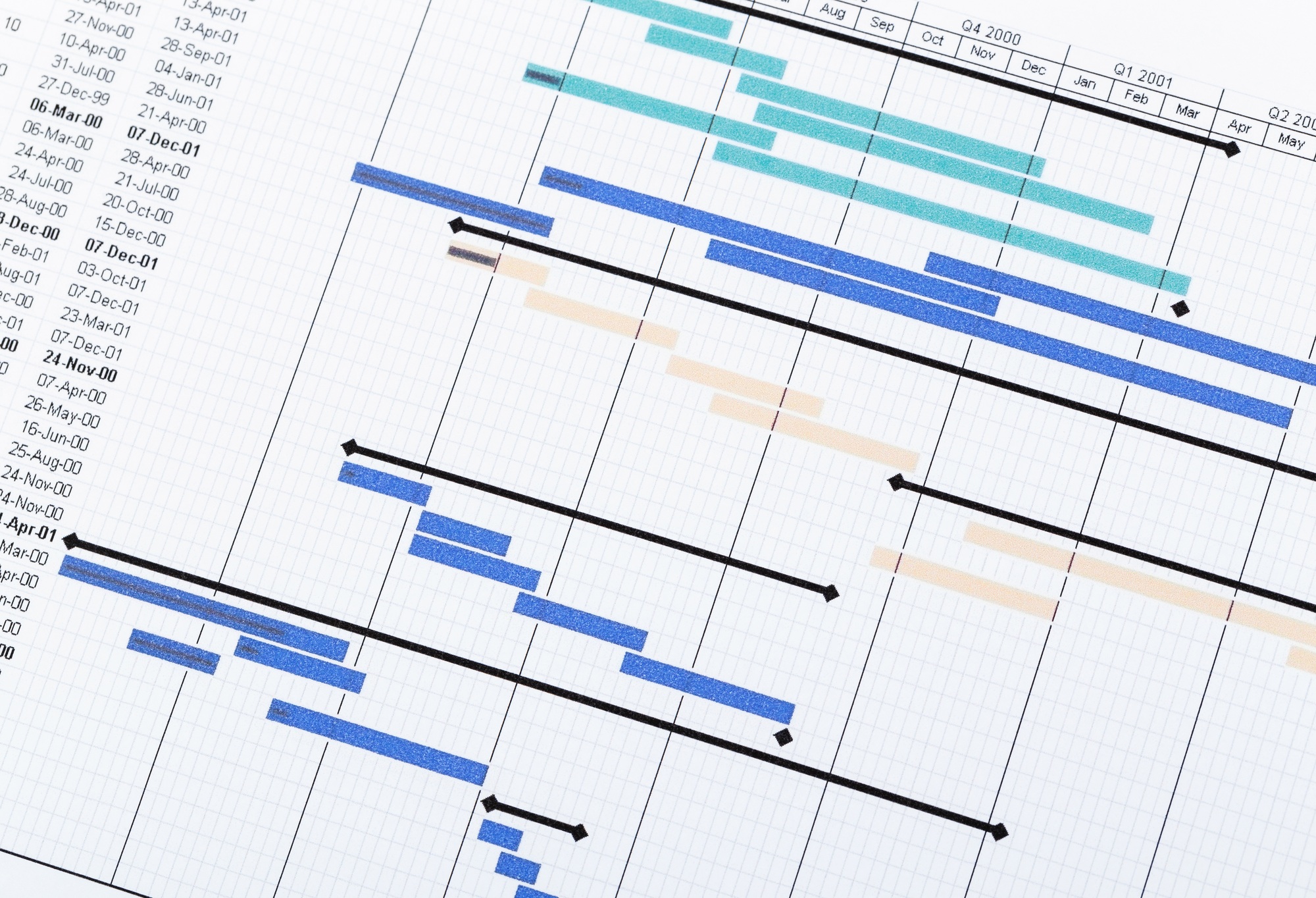Key Takeaways

- Importance of Project Timeline Tools: These tools are essential for managing projects efficiently, enabling visualization of tasks, deadlines, and resource allocation.
- Types of Tools: Familiarize yourself with Gantt charts, Kanban boards, project management software, time tracking tools, and specialized Gantt chart software for effective project management.
- Benefits of Using Timeline Tools: They improve planning, organization, and team collaboration by defining task relationships and providing visual insights into project progress.
- Popular Tools: Consider options like ProjectManager, Trello, and Asana, each offering unique features to streamline project management and enhance team communication.
- Choosing the Right Tool: Assess your team’s specific needs, project complexity, budget, and growth potential to select the most suitable project timeline tool.
Managing a project can feel like juggling flaming torches—one wrong move and everything could go up in flames. That’s where project timeline tools come in. These powerful resources help you visualize your project’s progress, allocate tasks efficiently, and keep your team aligned. With the right tool, you can transform chaos into clarity.
Whether you’re a seasoned project manager or just starting out, understanding the best timeline tools available can make all the difference. You’ll discover how these tools not only help you stay organized but also enhance collaboration and communication within your team. Dive in to explore the top options that can elevate your project management game to new heights.
Overview of Project Timeline Tools

Project timeline tools enhance your ability to manage projects effectively. These tools allow you to visualize tasks, manage deadlines, and allocate resources efficiently. For small businesses, utilizing these tools is crucial for maintaining organization and ensuring team alignment.
- Gantt Charts
- Gantt charts provide a visual representation of project timelines. You can track task durations while observing dependencies between activities. This clarity helps you stay on schedule.
- Kanban Boards
- Kanban boards enable you to monitor task progress through different stages. With this method, you can quickly identify bottlenecks and prioritize work effectively.
- Project Management Software
- Project management software, like Trello or Asana, offers integrated timeline tools. These platforms facilitate collaboration among team members while providing features for scheduling and tracking.
- Time Tracking Tools
- Time tracking tools help you measure the time spent on various tasks. Understanding time allocation can lead you to optimize workflows and improve efficiency as a small business.
- Gantt Chart Software
- Gantt chart software allows for detailed project scheduling. With features for task dependencies, resource allocation, and timeline adjustments, you can manage multiple projects simultaneously.
Using technology effectively can elevate your project management practices. Embracing project timeline tools makes it easier to achieve objectives, enhance communication, and streamline processes in your small business.
Benefits of Using Project Timeline Tools

Project timeline tools offer significant advantages for small businesses, helping streamline operations and enhance efficiency. Understanding these benefits can lead to improved project outcomes and better resource allocation.
Improved Planning and Organization
Improved planning and organization arise from project timeline tools, which create a clear trajectory for your projects. A logical sequence of tasks guides your team, making it easy to measure progress against crucial milestones. These tools help maintain structure throughout the project’s lifecycle and keep your team focused on key objectives. Defining task relationships ensures tasks are completed in the correct order. You can set start and end dates, link dependent tasks, and identify potential bottlenecks, which helps you manage workflows effectively and meet deadlines.
Enhanced Team Collaboration
Enhanced team collaboration results from utilizing project timeline tools. These tools foster better communication within your team, allowing everyone to stay informed about task assignments and deadlines. By providing a visual representation of timelines, team members can assess their responsibilities and understand how their work fits into the larger project goals. Robust collaboration tools streamline updates and feedback, ensuring everyone is aligned and motivated towards common objectives. With each resource working in sync, your small business can achieve higher efficiency and improved results.
Popular Project Timeline Tools

Project timeline tools play a crucial role in helping small businesses manage their projects effectively. Here are some popular options to consider:
Tool 1: ProjectManager
Features
- Multiple Project Views: View projects through Gantt charts, kanban boards, task lists, and calendar formats to enhance workload visualization.
- Advanced Gantt Charts: Utilize task dependencies, critical path analysis, and baseline tracking to evaluate planned versus actual progress.
- Collaboration Tools: Benefit from real-time email and in-app notifications, document management, global search, and version control with unlimited file storage.
- Resource and Cost Tracking: Assign resources efficiently and track costs directly within the Gantt chart.
- Mobile App: Access your projects on the go with an app available for both Android and iOS.
Review
ProjectManager receives high praise for its extensive features and user-friendly interface. Its advanced Gantt chart capabilities make it a top choice for small businesses managing complex projects.
Tool 2: Trello
Features
- Visual Task Management: Leverage boards, lists, and cards to organize tasks visually and maintain clarity on progress.
- Customizable Workflows: Modify boards to fit specific project needs, allowing for flexibility in task management.
- Integrations: Connect with various apps, including Google Drive and Slack, enhancing collaborative efforts.
- Checklists and Due Dates: Use checklists to track subtasks and set due dates to manage deadlines effectively.
Review
Trello is popular for its simple interface and adaptability. Small businesses find it useful for project visualization and task organization, ensuring teams stay aligned with goals.
Tool 3: Asana
Features
- Task Assignments: Assign tasks to team members and set priorities for effective workload distribution.
- Timeline View: Utilize the timeline feature to visualize project schedules and dependencies, ensuring milestones are met.
- Team Collaboration: Foster communication with comments, file attachments, and notifications within the platform.
- Progress Tracking: Monitor overall project progress with easy-to-read dashboards and reporting tools.
Review
Asana stands out for its robust task management and collaboration features. Small businesses appreciate its ability to streamline project workflows and maintain team engagement through a tech-focused platform.
How to Choose the Right Project Timeline Tool

Selecting the right project timeline tool involves careful consideration of your team’s specific needs and budget constraints. The right choice enhances efficiency and workflow, especially for small businesses.
Assessing Your Team’s Needs
- Evaluate project complexity and size. For complex projects, Microsoft Project provides advanced features like Gantt charts, task dependencies, and critical path analysis. This tool suits larger organizations, but small businesses with simpler projects might prefer user-friendly options.
- Consider your project management methodology. If your team uses agile methods, tools like Jira offer robust features and seamless integration for managing workflows and timelines. Such tools support adaptability, crucial in tech-driven environments.
- Analyze team size and composition. For smaller teams, tools like Trello and Asana fit well. Trello excels in visual project management with its Kanban boards, while Asana enhances task management and team communication.
Budget Considerations
- Determine your budget. Various tools come with different price points, affecting long-term affordability. Evaluate free trials or basic versions of tools to understand their effectiveness before committing to a paid version.
- Consider the potential return on investment (ROI). Tools that improve team collaboration, task allocation, and project tracking might lead to cost savings in the long run, ultimately benefiting your small business.
- Look for tools that offer scalability. Choose options that can grow with your business, ensuring you won’t outgrow the software as your needs evolve. This approach helps keep technology investments aligned with your future plans.
Conclusion

Embracing project timeline tools can transform the way you manage your projects. By choosing the right tool tailored to your team’s needs you’ll enhance organization and collaboration. These tools not only provide clarity but also keep everyone aligned toward common goals.
As you evaluate your options consider factors like project complexity and team size to find a solution that fits your budget and workflow. With the right project timeline tool in hand you can navigate the complexities of project management with ease and confidence. Your projects will benefit from improved efficiency and successful outcomes.
Frequently Asked Questions

What are project timeline tools and why are they important?
Project timeline tools are resources that help visualize project schedules and progress. They are crucial for effective project management as they allow teams to allocate tasks, track progress, and maintain alignment. Without these tools, managing a project can become chaotic, similar to juggling flaming torches.
What types of project timeline tools are available?
Common types of project timeline tools include Gantt charts, Kanban boards, and project management software like Trello and Asana. Gantt charts provide a visual timeline of tasks and dependencies, while Kanban boards track progress and identify bottlenecks. Project management software enhances collaboration and scheduling.
How do project timeline tools benefit small businesses?
For small businesses, project timeline tools enhance planning and organization, creating clear project trajectories. They help teams measure progress against milestones, maintain structure throughout the project, and improve communication, which ultimately leads to better project outcomes and increased efficiency.
What should I consider when choosing a project timeline tool?
When selecting a project timeline tool, assess your team’s specific needs, project complexity, and size. Consider project management methodologies and team composition. Additionally, evaluate your budget, affordability, potential ROI, and the tool’s scalability as your business grows.
Can project timeline tools improve team collaboration?
Yes, project timeline tools significantly enhance team collaboration. They foster better communication by keeping team members informed about task assignments and deadlines, which aligns the team towards common objectives and motivates them to achieve project goals efficiently.
Image Via Envato: bernardbodo, zamrznutitonovi, BrianAJackson, bialasiewicz, leungchopan, GaudiLab, Fender_SRV



